BARGAIN BINS |DUMPSTER RENTALS
Tips for cleaning out your home: rent a dumpster
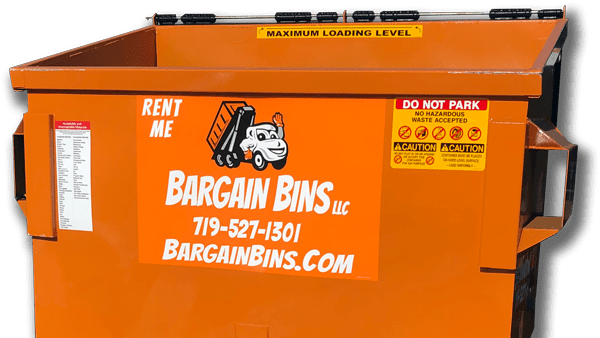
BARGAIN BINS | DUMPSTER RENTALS
Tips for cleaning out your home: rent a dumpster

We all know how easily junk can collect in our homes. Things we thought we would need pile up unused. Items with fading sentimental value get shoved into boxes and closets and forgotten about. Then there are those boxes of needless things that we meant to donate over a year ago, but just never got around to it. The effects and debris of our lives accumulate around us all the time. Life goes on, leaving us little time or energy to deal with the clutter. Then, when we finally become conscious of the problem, it seems too daunting to take on. Where do you even start? How many trips to the local dump will you have to take? How can you find the space and time you need to sort through all the junk? The good news is that, with a little planning and assistance, as well as a few expert tips for cleaning out your home, you can get the junk cleared sooner than you think.
There are two crucial elements to have in place before you start a home cleanout. The first is a plan and schedule that will help you get started and keep you going until the job is done. The second is a means to dispose of the trash as you go. Throwing things out as you progress through the cleanout helps you stay organized and keep things neat. It also helps you see the progress you are making, which will encourage you to keep at it. This is why the best thing you can do is rent a dumpster for the duration of your home cleanout. You choose the right size dumpster for the job and the bin is delivered to your home where it is placed in your yard or on your driveway. Every time you clear out some household junk, you simply toss it into the bin and carry on.
Here are some of the main benefits of using a dumpster rental serice when you decide to tackle a home cleanout:
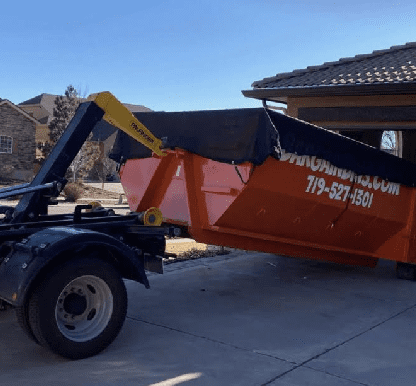
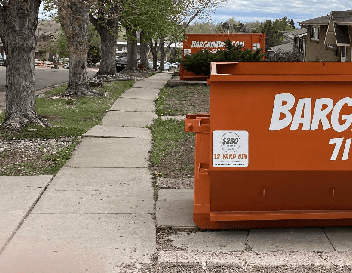
- It makes your home cleanout more organized and efficient.
- It saves you having to take trips to the dump.
- You won;t have to borrow a truck from a friend or rent one.
- You don’t worry about hauling heavy items or boxes of junk onto the back of a truck – and then off again. Save your energy – and your back!
- Dumpsters are versatile. There are certainly some things you absolutely cannot put in a dumpster (more on that later), but there is also an extensive range of materials that you can put in one, from old furniture to all kinds of household debris. You don’t need to spend as much time sorting different types of junk.
- In addition to being neater and more efficient, using a dumpster is also more eco-friendly than handling your own trash disposal with a few trips to the dump. Since more junk gets hauled away at once, there are fewer CO2 emissions.
- Renting a dumpster motivates you to get the job done. You rent the dumpster for a limited period (7 days is the usual term), which means you can organize your schedule accordingly and make sure that the job is completed.
- It gives you a place to dispose of bigger items. The little bits and pieces of junk you need to get rid of are pretty easy to deal with. It is the big items – furniture, old appliances, carpets, etc. – that pose the biggest challenge to your efforts to clear out your home. A dumpster gives you a place to put these things. It may take two or three of your family members to carry those old chairs out to the dumpster, but then you can throw them in and forget about them.
- In addition to simplifying and organizing your cleanout, renting a dumpster also makes it affordable. You deal with flat, upfront rental fees with no hidden costs or additions. If you want to keep the dumpster for longer, you pay an additional rental fee, but that is up to you. With no transport or any other costs to worry about, your dumpster rental will be the only expense you need to consider – and it is a manageable and reasonable one.
For all of these reasons, renting a dumpster would be foremost among our tips for cleaning out your home. Let’s take a look at some other tips to help you plan, organize and implement your cleanout.
Home cleanout: where to start?
As with so many seemingly unpleasant tasks, the hardest part of a home cleanout is getting started. Once you make that first move, it tends to progress with relative ease and speed, provided you keep at it and maintain the momentum. That is all well and good: but what should that ideal starting point be?
The answer is: draw up a plan. Every task worth doing should start with a blueprint, a map that will chart your course and guide you through to completion. A home cleanout is no different. Before you wade in and start throwing things away, take a moment to assess your situation and devise a scheme and schedule to deal with it.
- Set your goal: Decide what you want to achieve. Are you looking to make your home more marketable? Perhaps you just want to lead a more minimalistic life? Setting a definite goal. Creating a vision of what you want your home to look like after the cleanout will help you systematize the task better and will also motivate you to get it done.
- Create a plan: Go through each room and take inventory of what you have in there. What are the large pieces of furniture that you need to get out? Where will you need to spend more time sorting through a lot of smaller items? Once you have done that, create your plan. Perhaps you want to tackle it one room at a time, or maybe it would be better to go through and clear out all the old furniture throughout the house and then move on to smaller items. Create a plan that makes sense and that you can stick to. Make sure that plan is time bound. Give yourself a week, two weeks, whatever you think it will take. Break the job up into milestones. For example, you could say that you will clean the living room on Day One and then spend Days 2 and 3 on the spare bedroom.
Once you have your plan and schedule in place, you can rent your dumpster and get moving.
Organizing and purging
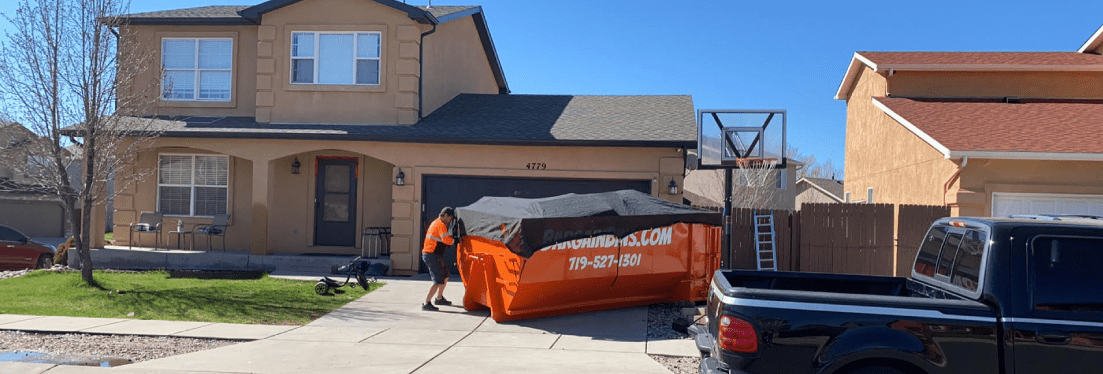
Once you get started, it is best to approach each space in your home in a systematic way. The most useful system is to purge the junk first and then organize what remains. You have a dumpster for a limited period, so your primary focus should be on what you want to get rid of. Clearing out the junk also gives you the space to organize what is left behind. Start with things that are obviously trash: broken items, empty containers, things you know without a doubt you will never need again. Having cleared that away, you will be left with things you want to keep, and perhaps some things you are not so sure about. Now, you can start sorting these out. Create three piles: keep, donate, and trash. Once you have finished sorting, you can take everything in pile three and throw it in the dumpster. Move the items in the donate pile into a designated short-term storage area – perhaps a corner of the garage, for example. Remember to set a timeline for the donation: don’t let the items sit there for too long; that would defeat the purpose. Once you have completed the cleanout, you can either call a charitable organization to come and collect your donations, or take them there yourself. Save this for the very end of the cleanout, but plan for it before you start.
What to donate
That second pile brings us to the next question. What can – and should – you donate? Not everything can be donated. Charitable organizations are often inundated with things they cannot resell or reuse, so be selective. Things you should donate include:
- Old clothing that is still in good, usable condition
- Useable bags and luggage
- Furniture that is still usable but perhaps you don’t want to resell. A good example would be couches that can be reupholstered, or woodwork that someone may wish to restore.
- Old computers and electronics, provided they still work.
- Toys. Your children have probably piled up all too many great toys that they just don’t use anymore. If they are in good condition, charitable organizations will definitely take them.
- Books. There is a good market for the resale of quality secondhand books. You can either take your old books to a secondhand dealer or donate them.
- Exercise equipment
- Old or rarely used appliances.
- Old eyeglasses.
What to recycle
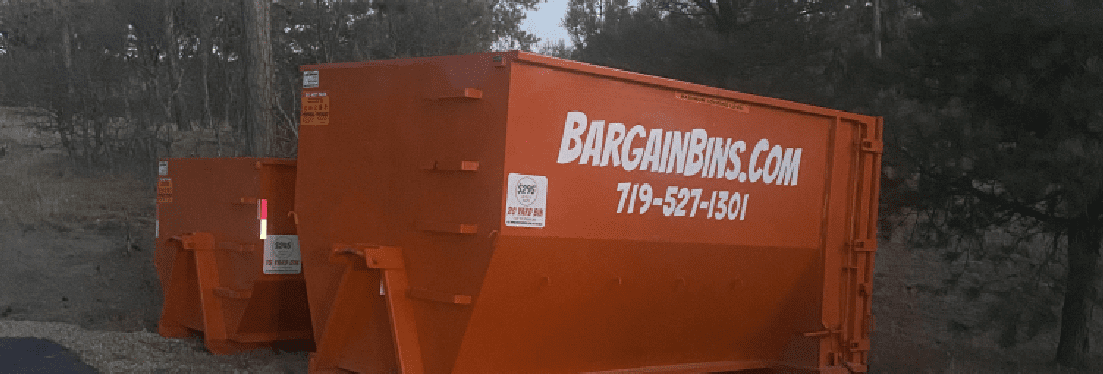
Before you throw anything into the trash pile, think about whether it can be recycled. Like donations, recycling should be done selectively and thoughtfully. Not everything can be recycled. Here are some things that you should definitely send for recycling:
- Old newspapers and magazines
- Cardboard boxes
- Drinks and food cans (aluminum and steel)
- Glass containers
- Plastic detergent bottles
- Aerosol cans (remove the plastic cap which can be recycled with other plastic items)
What goes into the dumpster
See Bargain Bins’ full list of acceptable and unacceptable items to know exactly what you can and can’t put in the dumpster. Here are some of the most common disposable items that you absolutely can put in our dumpsters:
- Appliances (not fridges and freezers)
- Bathtubs
- Cabinets
- Wooden furniture
- Drywall
- Old flooring
- Glass
- Metal furniture
- Paneling
- Packaging materials
- Rugs
- Toilets, old tiles and other ceramic items
Bargain Bins specializes in dumpster rentals and roll-off container rentals for residences and businesses in Colorado Springs and the surrounding areas. Our range of roll-off bins starts with our 3-yard Clutter Buster, and goes up to our giant 20-yard dumpster, which can take up to 5,000lbs of junk. If you are planning a house cleanout, first think about the above expert tips for cleaning out your home, then call us and rent the perfect dumpster for your spring cleaning project.

